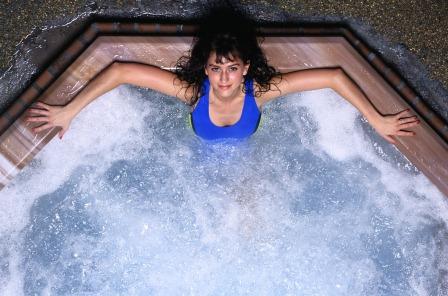
Among the full text records recently loaded to Environmental Impact is one which examined the water quality of spa waters at Polish health resorts.
Specifically the paper [1] examined the composition of the healing waters. Iron seems to be an important component present in 37 of 160 waters tested from 39 health resorts. Fluoride is also another important constituent of spa waters with 12 waters tested containing more than 2 mg/dm3. Some 28 of the waters contained sulphides in concentrations of >1 mg/dm3 while 64 waters contained iodide in similar concentrations. Even more alarming is the fact that waters which contain radon in an amount corresponding to the radiation of 74 Bq (2 nCi) in 1 dm3 are classified as radon waters. Ten of the analysed waters were found to contain this element.
A search of the database using the descriptor health resorts gave an interesting mix of papers which examined the bacteriological quality of the spa waters, health problems caused by using spa waters (hot tub lung) and tourism impacts of spa resorts. One paper [2] reported the death of a previously healthy 49-year-old woman from pneumonia came after she visited a wellness hotel for a spa holiday. Water samples contained bacteria that matched samples taken from the patient and revealed severe deficiencies in hygiene maintenance of the hot tubs at the hotel.
The presence of radon in Polish spa waters is not unique and a Hungarian study [3] examined uranium concentrations in spring, therapeutic and tap waters. The authors found that spring waters contained the highest concentrations of uranium while the lowest were found in tap waters. The calculated doses for the analysed samples of spring water are in the range 0.07-32.39 µSv/year with an average 4.32 µSv/year. This is well below the 100 µSv/year reference level of the committed effective dose recommended by WHO and the EU Council.
Traditionally, geothermally heated therapeutic spa waters widespread across Europe are not disinfected. This has led to sporadic outbreaks of legionellosis. The effectiveness of disinfection using UV and hyperchlorination was examined by Portuguese researchers [4]. They found that using UV light was an effective disinfection method and had the advantage of not affecting the physicochemical composition of the spa waters.
So a trip to the spa may not necessarily be the healthiest of options after all.
Related News & Blogs
Emerging contaminants – a growing concern?
[Image credit: minthu] Over the last 200 years, the global population has been growing at an exponential rate and according to the UN, is predicted to reach 8.5 billion by 2030. The population increase to date, has been supported by the development of…
12 February 2018

